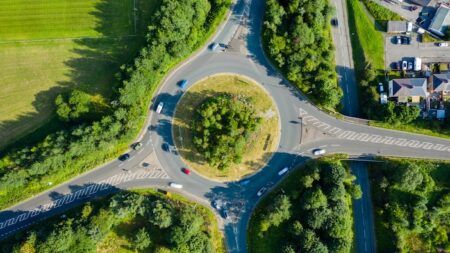A global leader in traffic systems technology, Miovision, has announced the creation of a new division focused on using transportation data and smart traffic technology to take cities closer to embedding intelligence in urban infrastructure.
At the Transportation Research Board (TRB) Annual Meeting, currently taking place in Washington DC (January 8-12), Miovision announced the creation of the new Miovision Labs division within the company, which will focus on transportation data, and research partnerships that will lay the groundwork for smart city infrastructure and applications. The new business unit is composed of a team of technologists and product strategists focused on the future of traffic. Its research will help cities make sense of the vast amounts of traffic data becoming available, and use that data to fuel smart city applications in traffic and beyond. The team will apply its expertise to improve vehicle flow in cities, and will also work with authorities to explore potential uses of connected traffic signals and the distributed computing networks they enable.
In one of its first research projects, Miovision Labs has partnered with CPCS, a management consultancy, to conduct research on freight data. The objective is to study how new types of traffic data from passive sensors, video cameras, GPS, and other sources, can be used to understand and improve how freight moves through urban and metropolitan areas. The vision of this project, sponsored by the TRB’s National Cooperative Freight Research Program (NCFRP 49), is to eventually inform how planners and policymakers in the public sector can coordinate and collaborate with private firms in both the collection and use of new data types for streamlining urban freight flows.
Miovision Labs will also work with the University of Toronto on research around conflict analysis. While not new in itself, conflict analysis has depended on human observation to detect and rank the severity of conflicts (or crashes) at a location, which is labor-intensive work. Because of this, agencies rarely use it to identify where infrastructure investments can be prioritized or to measure the impacts of infrastructure improvements. Instead, they typically wait for crashes to occur to identify high-risk intersections, or anywhere conflicts between modes of transport could occur. Crashes must occur for improvements to happen!
For its third project, the Labs division is working with the new World Bank-led Open Transport Partnership to change the way data companies collaborate with governments for the public good. The partnership will empower resource-constrained transport agencies to develop better, evidence-based solutions to traffic and road safety challenges. Miovision has committed to releasing traffic data to support this work.
“For the last century, transportation infrastructure ‘progress’ has been all about building more roads, and adding more lanes to try to move more people and freight from point A to point B,” said Kurtis McBride, CEO and co-founder of Miovision. “That brute force approach has become obsolete. In the next decade, transportation networks will be one of the most important pieces in smart cities.”




